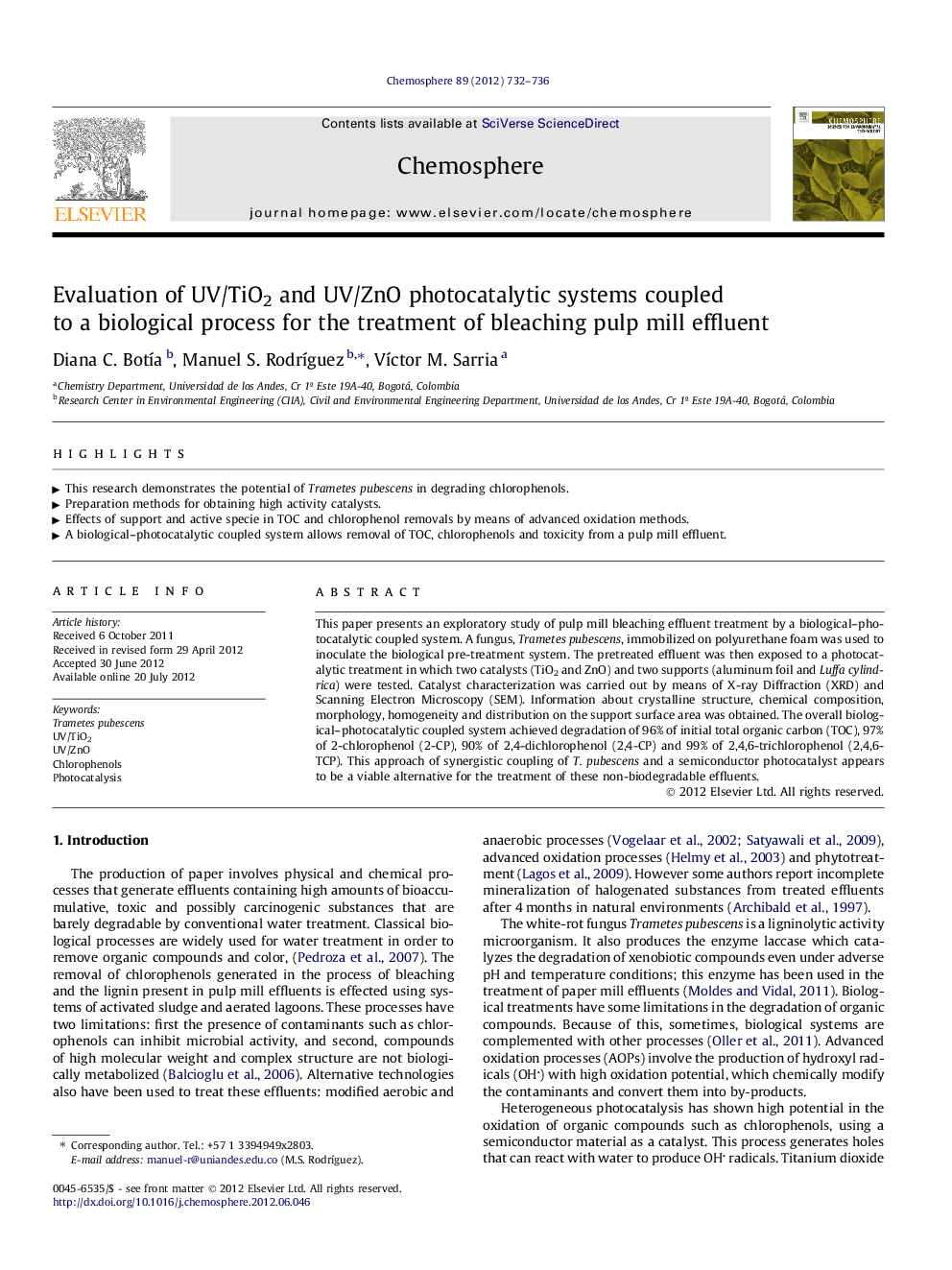| Article ID | Journal | Published Year | Pages | File Type |
|---|---|---|---|---|
| 4410033 | Chemosphere | 2012 | 5 Pages |
This paper presents an exploratory study of pulp mill bleaching effluent treatment by a biological–photocatalytic coupled system. A fungus, Trametes pubescens, immobilized on polyurethane foam was used to inoculate the biological pre-treatment system. The pretreated effluent was then exposed to a photocatalytic treatment in which two catalysts (TiO2 and ZnO) and two supports (aluminum foil and Luffa cylindrica) were tested. Catalyst characterization was carried out by means of X-ray Diffraction (XRD) and Scanning Electron Microscopy (SEM). Information about crystalline structure, chemical composition, morphology, homogeneity and distribution on the support surface area was obtained. The overall biological–photocatalytic coupled system achieved degradation of 96% of initial total organic carbon (TOC), 97% of 2-chlorophenol (2-CP), 90% of 2,4-dichlorophenol (2,4-CP) and 99% of 2,4,6-trichlorophenol (2,4,6-TCP). This approach of synergistic coupling of T. pubescens and a semiconductor photocatalyst appears to be a viable alternative for the treatment of these non-biodegradable effluents.
► This research demonstrates the potential of Trametes pubescens in degrading chlorophenols. ► Preparation methods for obtaining high activity catalysts. ► Effects of support and active specie in TOC and chlorophenol removals by means of advanced oxidation methods. ► A biological–photocatalytic coupled system allows removal of TOC, chlorophenols and toxicity from a pulp mill effluent.
